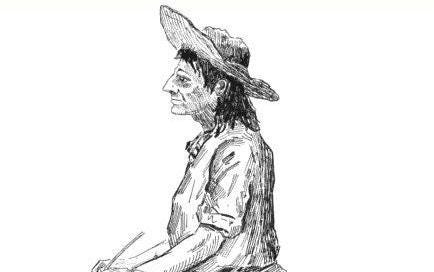The Melungeons: Appalachia’s Mysterious People
Introduction
The Melungeons have long been a source of intrigue and mystery in Appalachian history. This mixed-ancestry group, primarily found in the mountains of Tennessee, Kentucky, Virginia, and North Carolina, has inspired speculation about its origins for centuries. Often described as having darker complexions, European features, and a distinct cultural identity, the Melungeons have faced discrimination, secrecy, and evolving narratives about their heritage. Their history reflects the broader themes of migration, isolation, and cultural blending that define the Appalachian region (Kennedy, 1997).
Origins and Theories
The origins of the Melungeons remain a subject of scholarly debate. Traditional Appalachian folklore claims they descended from Portuguese sailors who shipwrecked along the American coast, intermarrying with Indigenous tribes and early European settlers. Other theories suggest ancestry that includes African, Moorish, Turkish, Jewish, and even Romani roots (Estes et al., 2014).
Some historians argue that the Melungeons are the descendants of early colonial settlers, both free and enslaved, who moved into the mountains to escape racial persecution. During the 17th and 18th centuries, Virginia and North Carolina enacted increasingly restrictive laws regarding race and social status. Mixed-race communities, composed of free Black people, Indigenous groups, and poor European settlers, formed in isolated areas to avoid legal oppression (Price, 1953).
Genetic studies have offered more concrete insights into their ancestry. A 2012 DNA analysis indicated a mixture of European, African, and Indigenous genetic markers among families historically identified as Melungeon. The study confirmed that early Melungeon ancestors were likely free people of color who intermarried within their communities to preserve social cohesion and avoid legal restrictions (Estes et al., 2014).
Cultural Identity and Discrimination
The Melungeons developed a unique identity, often maintaining secrecy regarding their ancestry to avoid discrimination. In the 19th and early 20th centuries, racial classification determined access to land, education, and legal rights. Many Melungeons were classified as "mulatto" on census records, leading to disenfranchisement and social exclusion (Pollitz, 2005).
In some cases, Melungeon families sought to pass as white, changing their surnames and altering family histories to avoid prejudice. Others embraced the label, forming tight-knit communities that preserved distinct cultural traditions, including folk healing, dialects, and religious practices. Their settlements, such as those in Hancock County, Tennessee, became centers of Melungeon heritage, despite ongoing marginalization (Kennedy, 1997).
The Impact of Isolation
Geographic isolation contributed to the preservation of Melungeon culture. Unlike many other mixed-race communities that assimilated into mainstream society, Melungeons remained in the remote mountains of Appalachia, where they maintained traditional ways of life. They engaged in subsistence farming, hunting, and small-scale trade, relying on communal support networks for survival (Price, 1953).
Oral traditions played a significant role in passing down history, as literacy rates were low in many rural areas. Stories of Portuguese ancestry, noble descent, or ancient origins helped preserve a sense of identity and pride within the community. Although many of these stories lacked historical evidence, they provided a cultural foundation that sustained Melungeon heritage (Pollitz, 2005).
Modern Research and Recognition
The 20th and 21st centuries saw a resurgence of interest in Melungeon history. Scholars, genealogists, and DNA researchers have worked to uncover factual evidence about their origins. Organizations such as the Melungeon Heritage Association have sought to educate the public and dispel myths, encouraging descendants to embrace their heritage (Estes et al., 2014).
With advancements in genetic testing, many Appalachian families have discovered ancestral connections to Melungeon lineages, leading to renewed cultural pride. Today, the Melungeon identity is recognized as a vital part of Appalachian history, contributing to the region’s rich tapestry of diversity and resilience.
Conclusion
The history of the Melungeons is one of survival, adaptation, and cultural perseverance. Despite centuries of marginalization and mystery, this Appalachian group has maintained a unique identity that continues to intrigue historians and descendants alike. Through ongoing research and recognition, the legacy of the Melungeons remains an essential part of the broader American story.
References
Estes, R., Crain, J., Goins, J., & Yates, D. (2014). Melungeons: Footprints from the past. Genealogical Publishing Company.
Kennedy, B. (1997). The Melungeons: The resurrection of a proud people. Mercer University Press.
Pollitz, K. (2005). Mixed blood communities of the Southeast. University of Alabama Press.
Price, E. T. (1953). A geographic analysis of white-Negro-Indian racial mixtures in the eastern United States. Annals of the Association of American Geographers, 43(2), 138-155.





